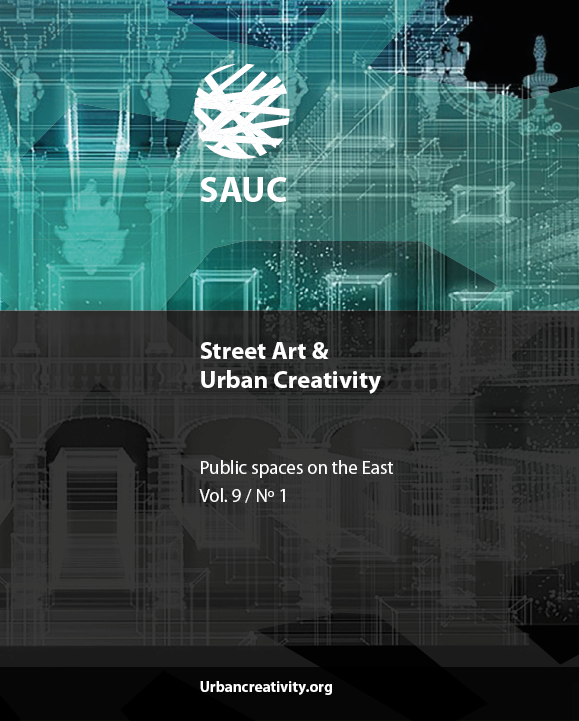From Urbex places to official walls in the cities in France: the liminal circulation of street art, from illegal to legal
DOI:
https://doi.org/10.25765/sauc.v9i1.682Resumen
Many street artists started their practice as vandals on walls, trains, etc. But we often forget what they did in abandoned places called Urbex. It is in such places that we have been working for many years in proximity, exchanging and sharing with these artists, some of whom have gained recognition in the art world or in urban politics. This fieldwork is both a work about history of contemporary art and an anthropological study. It has enabled us to highlight the need for these artists to remain between the two worlds: that of known and recognized art and that of their origins, i.e. illegal, hidden and free. We give an overview here with examples of Urbex locations and artists from the south of France. But we also show the discomfort they feel in the "cultural third places" where their freedom is often limited by those who finance these places.
Descargas
Estadísticas globales ℹ️
|
142
Visualizaciones
|
45
Descargas
|
|
187
Total
|
|
Descargas
Publicado
Cómo citar
Número
Sección
Licencia
Los autores/as que publiquen en esta revista aceptan las siguientes condiciones:
- Los autores/as conservan los derechos de autor.
- Los autores/as ceden a la revista el derecho de la primera publicación. La revista también posee los derechos de edición.
- Todos los contenidos publicados se regulan mediante una Licencia Atribución/Reconocimiento-SinDerivados 4.0 Internacional. Acceda a la versión informativa y texto legal de la licencia. En virtud de ello, se permite a terceros utilizar lo publicado siempre que mencionen la autoría del trabajo y a la primera publicación en esta revista. Si transforma el material, no podrá distribuir el trabajo modificado.
- Los autores/as pueden realizar otros acuerdos contractuales independientes y adicionales para la distribución no exclusiva de la versión del artículo publicado en esta revista (p. ej., incluirlo en un repositorio institucional o publicarlo en un libro) siempre que indiquen claramente que el trabajo se publicó por primera vez en esta revista.
- Se permite y recomienda a los autores/as a publicar su trabajo en Internet (por ejemplo en páginas institucionales o personales), una vez publicado en la revista y citando a la misma ya que puede conducir a intercambios productivos y a una mayor y más rápida difusión del trabajo publicado (vea The Effect of Open Access).













